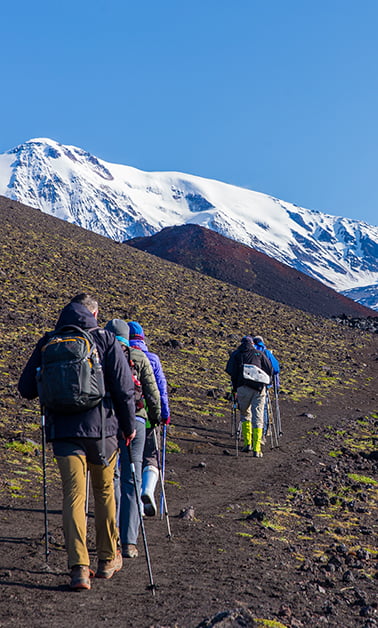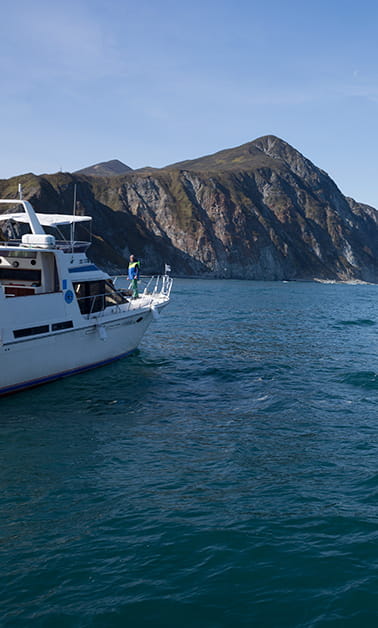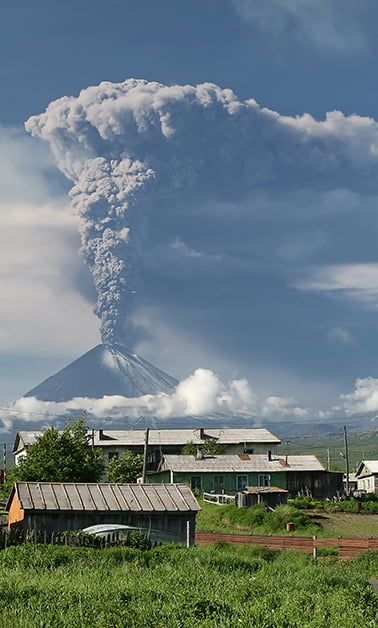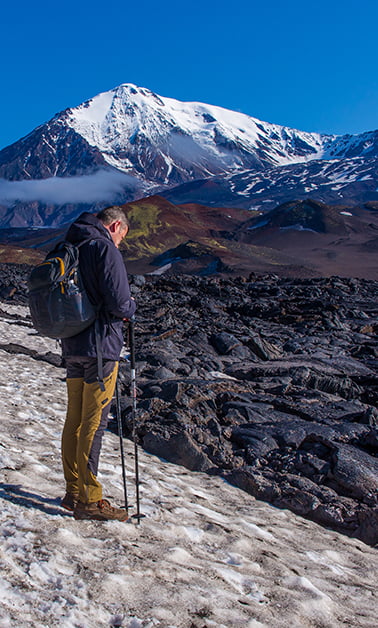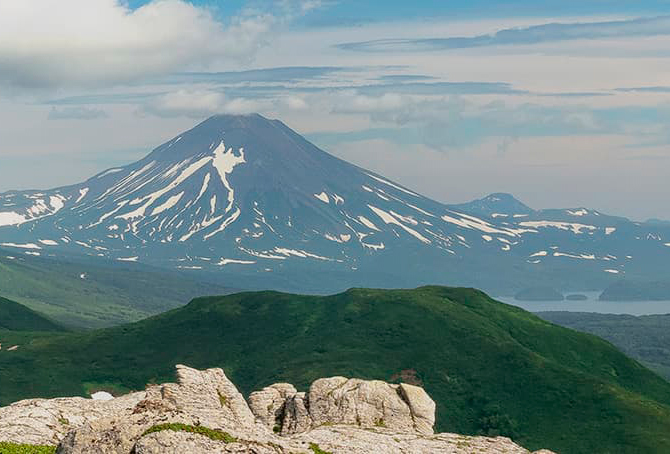
Klyuchevskaya Sopka
Climbing the Klyuchevskaya Sopka volcano is on the mandatory list of climbers who wish to receive the honourable title of ‘Snow Leopard of Russia’.
Klyuchevskaya Sopka (or Klyuchevskoy Volcano) is one of the most famous volcanoes in Kamchatka. Now, its peak reaches a height of 4,850 meters. Klyuchevskaya Sopka goes back 7,000 years. It is the right-shaped and the highest volcano on the Eurasian continent.
Klyuchevskoy volcano area is one of the largest in Kamchatka. Near this giant, there is a chain of peaks called the Klyuchevskaya group of volcanoes: Bezymianny volcano (2,882), Bolshaya Udina (2,923), Kamen (4,575), Zarechny (760), Krestovsky (4,057), Malaya Udina (1,945), Zimina, Tolbachik complex, Ushkovsky (3,943), Kharchinsky (1,400).
Klyuchevskoy volcano rises in the east of the peninsula at a distance of 360 km straight from Petropavlovsk-Kamchatsky and 60 km from the village of Kozyrevsk. You can reach the volcano for 1/1.5 days walking from this village on foot or by all-terrain bus (cross-country vehicle), which will take you there much faster.
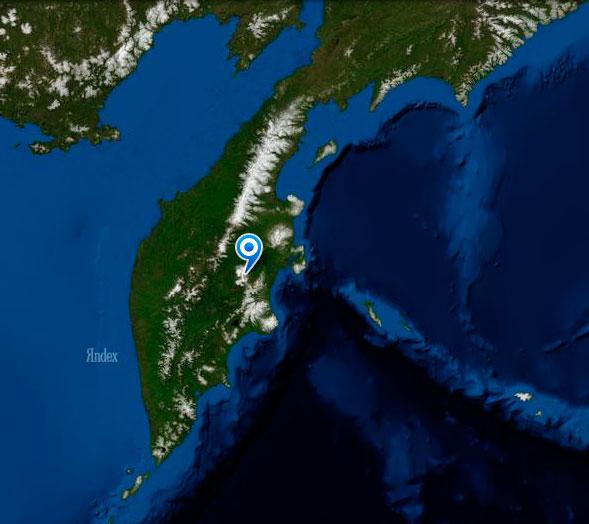
Powerful eruptions occur here once every five years. Thus, we can conclude that Klyuchevskoy erupted more than one hundred times throughout its history! This volcano is rightly considered one of the most active on the planet.
The first who mentioned the eruption of Klyuchevskaya Sopka in 1697-1698 was Russian discoverer Vladimir Atlasov. He gave the volcano its modern name. On average, the calm period lasts 5 years, after which the volcano erupts. However, the resting period can be either shorter (3 years) or longer (10-12 years).
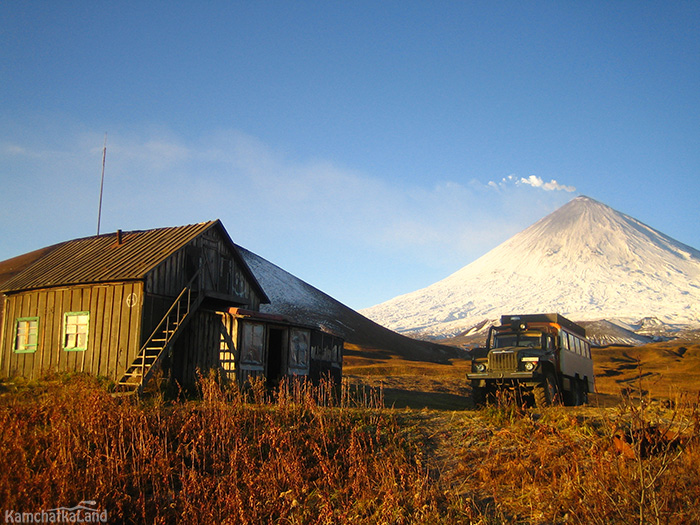
The nature of the eruptions of Klyuchevskaya Sopka is explosive. Over the past 270 years, more than 50 powerful eruptions have occurred. With powerful emissions, the volcanic plug formed by the previous eruption pops out to a height of 2 kilometers, and the ash column sometimes reaches 20 km. The Volcano activity can last from several weeks to several months. Eruptions of Klyuchevskoy Volcano look fantastic from space. A string of smoke spreads across half of the Earth. Astronauts from around the world captured similar images.
The Absolute Height of Klyuchevskaya Sopka
The height of Klyuchevskaya Sopka changes every year and ranges from 4,750 to 4,850 m. Just since the last eruption in 2013, it has grown by 15 m and today reaches its maximum height of 4850 m.
Due to the structure of Klyuchevskaya Sopka, all modern eruptions are observed through primary and secondary craters. The first one resembles a huge funnel, which is filled with slag and lava within periods of increasing pressure. In the center of the funnel, a new cone is growing and it extends sometimes beyond the edge and thereby increases the total height of the volcano.
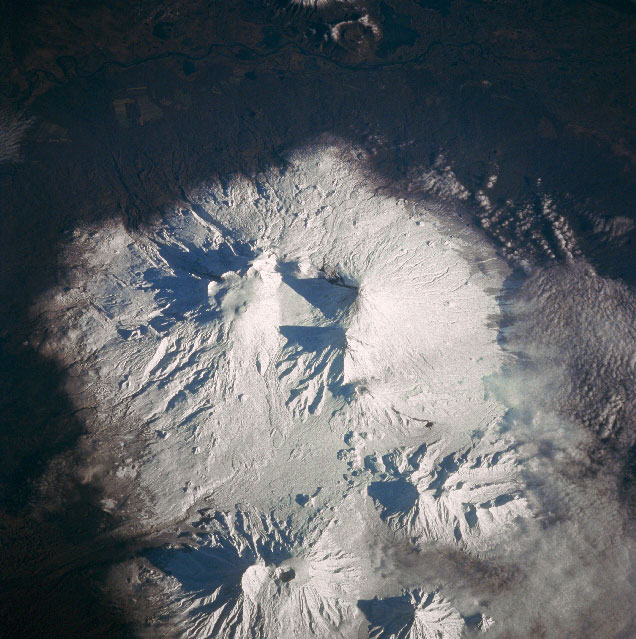
Until 1978, the peak was located at around 4,750 m, the crater reached 700 m in diameter, and its depth went down by 500 m. Since this year, the top of Klyuchevskaya Sopka is steadily growing. The inner cone formed in the main funnel was gaining its strength and protruded beyond the edges so that the total height of the largest volcano in Kamchatka grew by 100 m by 1990. By that time, the crater was completely filled with lava and endless streams of red rivers poured into slopes of a hot hill. By 1993, the absolute height of the volcano was 4,822 m. Klyuchevskaya Sopka is the highest point not only throughout Kamchatka but also in the whole mountain system called the Eastern Range.
Origin of the name of Kliuchevskoi volcano
Apparently, Klyuchevskaya Sopka got its name because of its proximity to the village of Klyuchi. Here, not far from the settlement, there is the Klyuchevka River, which was called by immigrants from other lands. The described names indicate the nature of the area and the richness of the region with hot springs (klyuch in Russian).
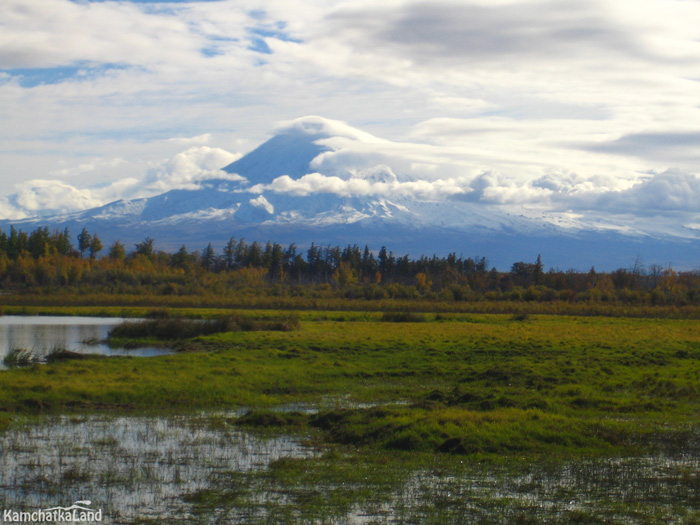
There are several legends of the origin of Klyuchevskaya Sopka. One of them tells the story of the local hero Tomgirgin and his bride Itatel, who lived on Klyuchevskaya plain at that time. Itatel’s father was strict and told the hero that he would give his daughter in marriage to him only if he would build a large yurt that would be visible from the coast. Back then, high mountains rose between the coast and the valley. Despite this, the hero coped with his task, and Itatel’s father gave his daughter to Tomgirgin. They played a wedding and fired up the hearth when arrived home. A pillar of fire flew high into the sky and faded away only for a while. As the legend has it, the hearth is kindled again every time when guests come to Tomgirgin and Itatel.
According to another version of the locals, Klyuchevskoy Volcano is the abode of the dead. They say that the volcano erupts when the dead stoke their yurts with the whales’ bones, caught in the underground sea under the volcano. The locals are usually afraid of Klyuchevskaya Sopka and do not climb it.
The Type of Klyuchevskoy Volcano
Klyuchevskaya Sopka is the highest volcano not only in Kamchatka but also throughout Russia. Being active, it refers to stratovolcanoes. The modern cone, especially its apical part, is covered with snow most of the time, cut by deep ravines and complicated by gutters of tectonic origin. The latter are large pits, topographic lows, which narrow in the lower part and expand in the upper. Near the crater, steep ledges limit such trenches, and their cavities are heated areas. Starting from the height of about 3,000 m, a large number of slag cones cover the surface of the volcano. They are concentrated mainly on the southeastern and northeastern slopes. The total number is about 100 pieces, 30 of which were formed in our time.

When Klyuchevskaya Sopka erupts, lava flows out of the volcano vent (its main funnel), as well as out of side cones and descend to the foot of the gutters in the form of glowing avalanches and mudflows. The largest gutters got their own names: Krestovsky Gutter (north-western slope), Kozyrevsky Gutter (western part of the volcano), Apakhonichevsky Gutter (descends along the south-eastern slope). The area at the foot of the Sopka is covered with volcanic sand and washed out by dry rivers. The largest Kamchatka River flows here, as well. A joint snow cover with about 30 glaciers with a total area of 220 km² under connects Klyuchevskaya Sopka with other nearby volcanoes. Coniferous forests grow in the volcano area. The only place in Kamchatka where edelweiss grows are the southern slopes of Klyuchevskaya Sopka. The nearest lake is located in the village of Klyuchi. There, nature created a whole network of small reservoirs that go by the chain to the sea.
Earlier, at the end of the XVII century, the formation of Klyuchevskaya Sopka occurred only due to vertex eruptions. Later, from 1932, the regimes of volcanic activity changed with the appearance of side eruptions on the slopes of the volcano, which forms its modern outlook.
The first volcanological station, where constant monitoring of the volcanoes of the Klyuchevskaya group began, was opened on September 1, 1935, in the village of Klyuchi. However, the eruptions data was documented only in 1967, and Stepan Krasheninnikov was the first who described the eruption of Klyuchevskaya Sopka.
The activation of Klyuchevskaya Sopka is always alarming and creates a dangerous situation for international and local airlines.
Animal World
Klyuchevskaya Sopka is part of a protected natural park. Within it, along with kilometers of volcanic landscapes, there is a diversity of wildlife, as well. Here you can meet sable, snow sheep, lynx, wolverine, hare, moose, and even brown bear. These animals live not only in forests at the foot of volcanoes, but can also climb to some heights along hiking trails.
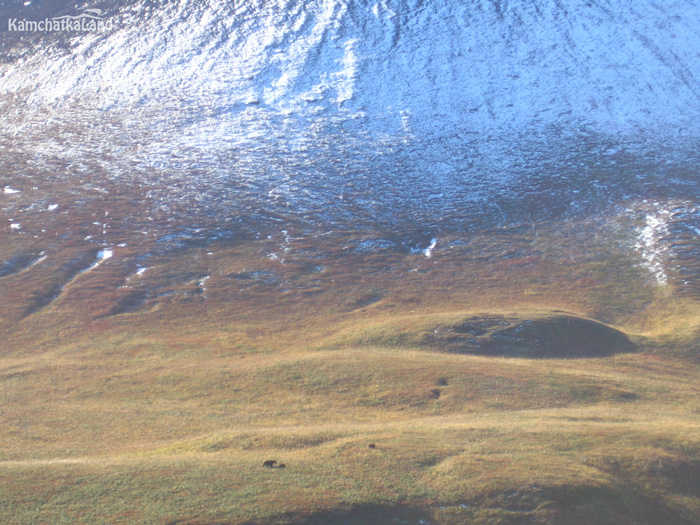
Glaciers
The glacial complex of the volcano is a unique formation. There are such glacial formations as an ice belt, wandering glaciers, multilayer glaciers, and others. On the slopes of Klyuchevskoy and Ushkovsky volcanoes, the largest glaciers of the peninsula originate – Bogdanovich and Ehrman, each of which reaches 45 km². They are complex formations with separate active streams of ice, passive ice that activates during seismic activity, glaciers with lava fields and slag cones. Every year, the area of glaciation of the Klyuchevskaya group increases.
Lenticular Clouds
One of the interesting facts is the formation of the so-called lenticular clouds above Klyuchevskaya Sopka. A cloud that looks like a wide-shaped cone covers the top like a mushroom hat. This form of cloud is quite rare. They do not move despite strong gusts of wind.
Lenticular clouds usually hang on the leeward side of mountain ranges and can be located at an altitude of 2,000 to 15,000 km.
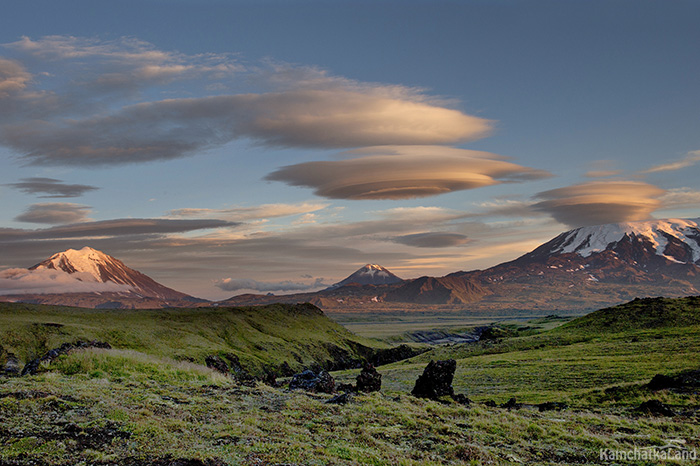
The appearance of such clouds over volcanoes suggests that there are horizontal air currents near it, as well as high moisture in the air.
Interesting Facts
The uniqueness of Klyuchevskaya Sopka with its size, active processes, the nature of the relief and forms attracts great attention from climbers and tourists, especially in summer, when it is most accessible. However, it also collects the largest number of victims in comparison with other volcanoes of Kamchatka. One of the main reasons is non-compliance with safety regulations, as well as the underestimated nature of the volcano.
History knows the case when a young man died on the slopes of Klyuchevskoy Sopka in August 1978. The reason was a volcanic bomb that fell into the tent where he slept.
Ascending Klyuchevskaya Sopka runs in several steps and usually from the direction of the side crater Apahonchich. The seismological station of volcanologists, located at a height of 740 m, 80 km from the village of Klyuchi, has the same name.
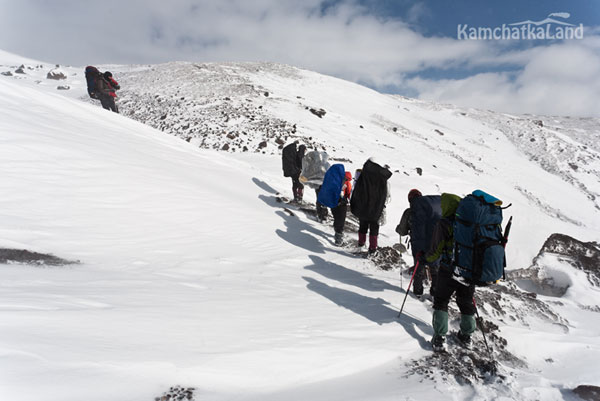
In 1788, Daniil Gauss, a naval officer, and his two companions became the first who had ever ascended Klyuchevskaya Sopka. To the historical information, the expedition members ascended without mountaineering skills, as well as without special equipment. Information about the following attempts to climb became known only after more than 140 years, when in 1931, a group of climbers, trying to conquer the hill, died during an avalanche.
Popular tours with Kamchatkaland
Ready-made packages for your travel and vacation in Kamchatka

